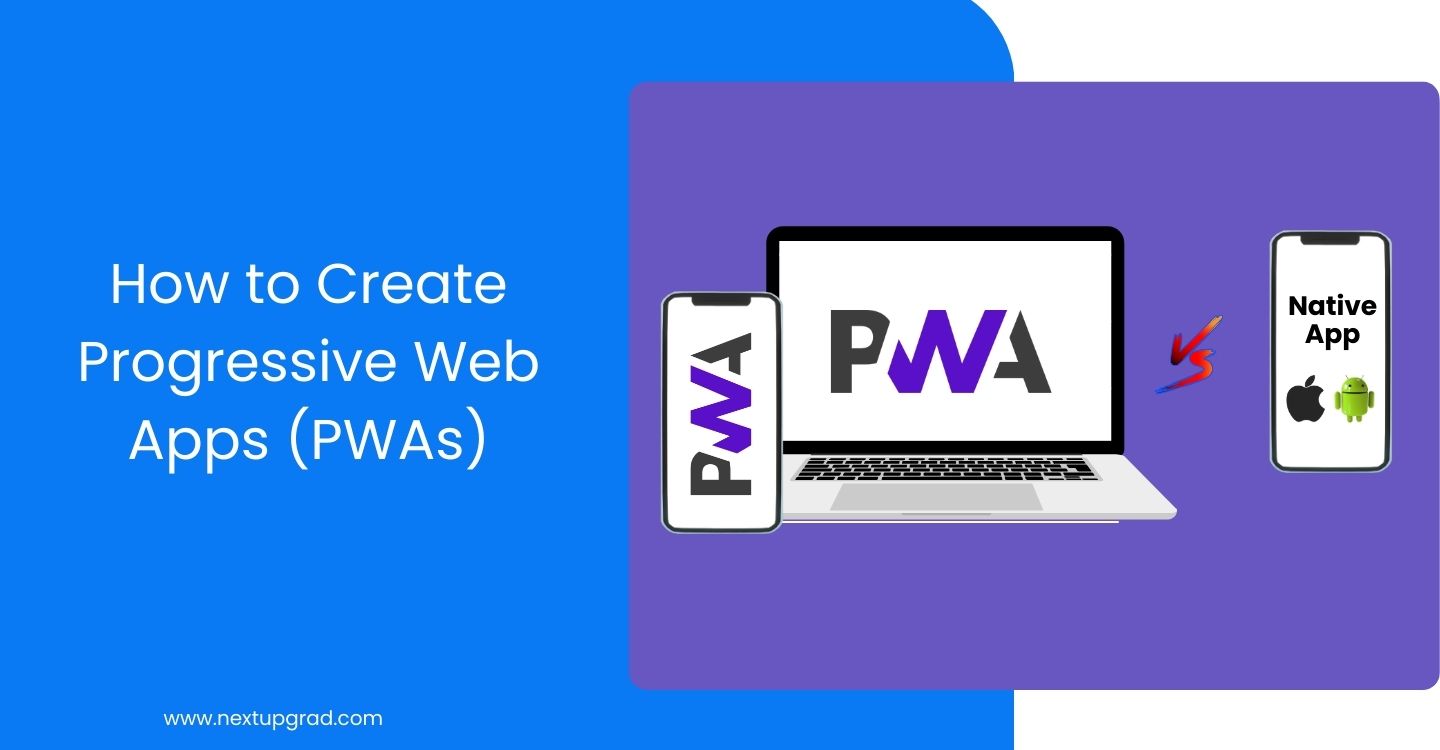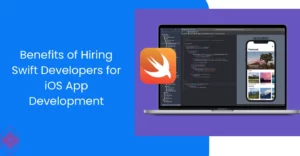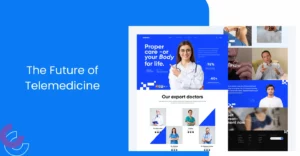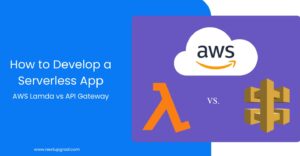In today’s digital landscape, where users demand seamless experiences across devices, Progressive Web Apps (PWAs) have emerged as a powerful solution for enhancing user engagement.
PWAs combine the best of web and mobile applications, offering users fast loading times, offline capabilities, and app-like interactions, all within the browser.
Whether you’re a developer looking to create a PWA or a business aiming to improve user engagement, understanding the key principles and techniques behind PWAs is essential. Let’s explore how you can create PWAs to elevate user engagement and drive success.
Progressive Web Apps, or PWAs, are what?
PWAs are a type of web application that combines the best of both worlds: websites and native apps. They offer functionalities typically associated with native apps, like push notifications, offline functionality, and home screen installation, all while remaining accessible through a web browser. This eliminates the need for app store downloads and installations, making them readily available to a wider audience.
- Built with web technologies: PWAs are created using familiar web technologies like HTML, CSS, and JavaScript. This makes them easy to develop and deploy compared to native apps that require platform-specific coding.
- Work across platforms: Since PWAs are web-based, they can run on any device with a modern browser, eliminating the need to develop separate apps for iOS, Android, etc.
- App-like features: PWAs can offer features typically seen in native apps, like push notifications, the ability to work offline, and installability on the home screen.
- Improved user experience: PWAs are designed to be fast and responsive, providing a smooth user experience even on slower connections.
To create a Progressive Web App (PWA), follow these steps
Creating a progressive web app (PWA) involves building a web app development that offers an app-like experience. Here’s a general breakdown of the process:
Prerequisites:
- Basic Web Development Skills: Familiarity with HTML, CSS, and JavaScript is essential for building the core structure and functionality of your PWA.
- Code Editor: You’ll need a code editor like Visual Studio Code to write and edit your code.
- Local Web Server (Optional): A local web server like Node.js can help test your PWA during development.
Steps to Create a PWA:
- Develop the Core Web App:
- Build the core functionalities and user interface of your web application using HTML, CSS, and JavaScript.
- Create an App Manifest:
- An app manifest is a JSON file that provides information about your PWA to the user’s device. It influences things like app names, icons, themes, and startup behavior. You can find resources online to guide you through creating a manifest.
- Implement a Service Worker:
- A service worker is a script that runs in the background, even when the app is closed. It enables features like offline functionality, push notifications, and background sync. There are libraries available to simplify service worker implementation.
- Configure Caching:
- Use the service worker to cache essential app resources (like HTML, CSS, and JavaScript files) so the app can function even without an internet connection.
- Test and Deploy:
- Thoroughly test your PWA on different devices and browsers. Once satisfied, deploy your app to a web hosting service so users can access it.
Benefits of Progressive Web Apps (PWAs)
Progressive Web Apps (PWAs) offer a blend of features from websites and mobile app development, providing advantages for both users and businesses. Here are some key benefits of PWAs:
For Users:
- Enhanced Performance: PWAs load quickly and work smoothly, even on unreliable internet connections. This is because they can cache essential data for offline use.
- Offline Functionality: Unlike traditional web apps, PWAs can function even without an internet connection. This allows users to access features and content they’ve previously interacted with.
- Install and Use Like Native Apps: PWAs can be installed on a user’s home screen, just like a native app. This provides easy access and a familiar app-like feel.
- Push Notifications: PWAs can send push notifications, similar to native apps, keeping users engaged and informed about updates or promotions.
- Accessibility: PWAs are built using web standards, making them inherently accessible across various devices and browsers.
- Lower Data Consumption: PWAs are typically smaller in size than native apps and use less data, which is beneficial for users on limited data plans.
For Businesses:
- Cost-Effective Development: PWAs can be developed using existing web technologies, potentially reducing development costs compared to creating separate native apps for different platforms.
- Wider Reach: PWAs don’t require installation from app stores, reaching a broader audience without app store limitations or approval processes.
- Improved User Engagement: Features like push notifications and home screen installation can lead to better user engagement with the business.
- Search Engine Optimization: PWAs benefit from SEO (Search Engine Optimization) just like websites, potentially increasing organic discovery.
- Easier Updates: Updates to PWAs happen automatically in the background, eliminating the need for users to manually download new versions.
Challenges businesses might face with PWAs
Progressive Web Apps (PWAs) offer numerous benefits, but they also come with their own set of challenges for businesses
- Limited functionality: PWAs may not have access to all the device features that native apps do.
- Lower discoverability: It can be harder for users to find PWAs compared to apps in app stores.
- Development expertise: Building a PWA might require specific development skills or tools that some businesses may not have in-house.
- Drains device battery: Some PWAs can consume more battery life than regular websites because of features like push notifications and background syncing.
- Security Concerns: As PWAs are accessed via web browsers, they are susceptible to web-based security threats such as cross-site scripting (XSS) and data breaches. Businesses must implement robust security measures to protect user data and ensure the integrity of their applications.
What is the difference b/w a Progressive web app and a native app?

While PWAs share functionalities with native apps, there are key differences to consider:
Platform:
- PWA: Runs on any web browser, offering cross-platform compatibility (Android, iOS, desktop)
- Native App: Built specifically for a particular platform (iOS or Android)
Development:
- PWA: Uses web technologies (HTML, CSS, JavaScript) – faster and potentially cheaper to develop
- Native App: Requires platform-specific languages (Swift/Objective-C for iOS, Java/Kotlin for Android) – typically more expensive and time-consuming.
Installation:
- PWA: No app store download is required. Users can access the app through a URL and add it to their home screen.
- Native App: Needs to be downloaded and installed from the app store (Google Play Store or Apple App Store).
Performance:
- PWA: Generally good performance, but may not be as smooth as native apps due to browser limitations.
- Native App: Can leverage device hardware for optimal performance and responsiveness.
Features:
- PWA: Limited access to some device features (GPS, camera) compared to native apps.
- Native App: Full access to device features and functionalities.
Offline Functionality:
- PWA: Can work offline in some cases, thanks to service workers that cache content.
- Native App: Typically requires an internet connection.
Cost:
- PWA: Generally cheaper to develop and maintain.
- Native App: More expensive to develop and maintain due to the potential need for multiple versions (iOS, Android).
Popular Progressive Web App (PWA) Frameworks

- Vue.js: A lightweight and versatile framework gaining popularity for PWA development.
- React: A well-established framework known for its component-based architecture and large developer community.
- Next.js: A framework built on top of React that offers features specifically geared towards server-side rendering and static site generation, both beneficial for PWAs.
- Polymer: An open-source framework developed by Google, Polymer offers a collection of web components that simplify PWA development.
- Workbox: A JavaScript library by Google, Workbox helps developers implement essential PWA functionalities like service workers, background sync, and caching.
- Angular: A popular framework by Google, Angular can be effectively used to build PWAs with its component-based architecture and rich ecosystem of tools.
Real-World Examples of Progressive Web Apps (PWAs)
Several industry leaders have successfully leveraged PWAs to enhance user experience and drive business growth. Here are a few notable PWA examples:

- Starbucks: The Starbucks PWA allows users to order and pay for their coffee directly from their mobile browser.
- Twitter Lite: Twitter’s PWA offers a streamlined interface and offline support, allowing users to stay connected even with limited internet connectivity.
- Flipkart: India’s leading e-commerce platform, Flipkart, launched a PWA to reach users in areas with slow internet connections, resulting in increased engagement and conversions.
Success Stories of Progressive Web Apps (PWAs) in Leading Startup Companies [Stats]
- Pinterest, after converting to PWA, reported a 60% increase in mobile engagement. The core metrics showed a 44% increase in user-generated ad revenue and a 40% increase in time spent on the PWA compared to the previous mobile website.
- Tinder reduced the size of its app from 30 MB to just 2.8 MB as a PWA. This not only increased performance but significantly reduced the amount of data needed to install the app.This size efficiency contributed to a 4.69-second improvement in load times, which in turn led to longer user sessions and increased messaging among users.
- After launching its PWA, Twitter saw a 65% increase in pages per session, a 75% increase in Tweets sent, and a 20% decrease in bounce rate.
- Alibaba increased its conversion rates on the mobile web by 76% after upgrading its site to a Progressive Web App.
- Trivago saw a significant increase in user engagement after implementing push notifications in their PWA. Notifications about deals, price drops, and user reviews led to a 97% increase in click-through rates to hotel offers, demonstrating the impact of timely, relevant notifications.
Conclusion
In conclusion, Progressive Web Apps development represents a pivotal moment in the evolution of user engagement on the web.
By combining the best features of web and mobile applications, PWAs offer a user experience that’s unparalleled in its convenience, accessibility, and engagement potential.
As you embark on your journey to create PWAs, remember to prioritize performance, responsiveness, and user-centric design.
With dedication and innovation, your PWAs can become powerful tools for enhancing user engagement and driving sustained success in the digital realm.




